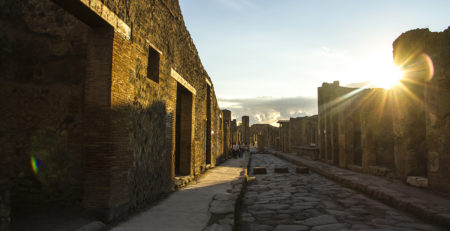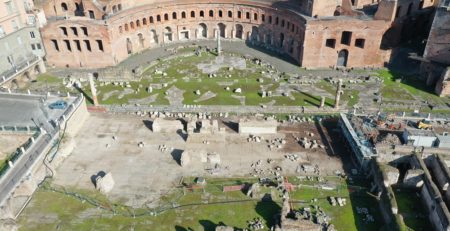Cleopatra: diva of the day
CLEOPATRA. Queen of Egypt at 18. One of the most famous and powerful women in history.
Goddess, queen, & skilled diplomat.
At the height of her rule more than two thousand years ago, she controlled Egypt and other lands including most of the eastern Mediterranean coast.
She was also one of the richest people in the world. She was known for her striking personality, her sharp intelligence and her alliances with the two most powerful men of her time. Her name was Cleopatra.
Many people remember Cleopatra as the beautiful and fiery woman played by Elizabeth Taylor in the nineteen sixty-three movie “Cleopatra.”
Miss Cleo was also the subject of one of William Shakespeare’s great tragic plays, “Antony and Cleopatra.” Shakespeare describes Cleopatra with these lines:
“Age cannot wither her, nor custom stale her infinite variety; other women cloy the appetites they feed, but she makes hungry where most she satisfies.”
Cleopatra the Seventh was born over two thousand years ago in sixty-nine B.C., or sixty-nine years before the birth of Christ. Her ancestors came from a long line of rulers that began with Ptolemy the First and ended with Cleopatra. This family is known as the Ptolemies. Although Cleopatra ruled Egypt, she was not Egyptian. She was Macedonian Greek. Her first language was Greek, but historians say she spoke eight others including Hebrew, Latin, Parthian and Egyptian.
-Cleopatra became queen of Egypt at the age of eighteen. Egyptian tradition required that a female rule alongside a male family member. She ruled jointly, first with her younger brother, Ptolemy the Thirteenth. She was also married to him. After his death, Cleopatra ruled with her other brother Ptolemy the Fourteenth. Later she ordered that he be killed.
-The Ptolemies were famous for marrying within their family. They were also well known for their murderous aims and often plotted to kill one another to gain power. Cleopatra’s sister Arsinoe attempted to have herself declared queen of Egypt. So Cleopatra ordered that her sister be killed. Cleopatra was not interested in sharing power and was not going to risk any threats from her family members.
-One of Cleopatra’s main concerns throughout her reign was Egypt’s relationship with the powerful Roman Republic. The Romans had taken control of most of Europe and parts of North Africa.
-Cleopatra had good reason to be concerned that Rome would try to take over Egypt. She worked hard to create strong alliances with Rome’s leaders. She offered them her financial support and resources such as grain, warships and soldiers. Egypt was an extremely rich country, and Rome began to depend on its wealth. Throughout her more than twenty years as ruler, she kept Egypt allied with, but independent from, Rome.
-Starting in the year forty-eight B.C., Cleopatra allied herself with the Roman general and statesman Julius Caesar. She had been exiled by her brother Ptolemy the Thirteenth and was fighting to take back power. Rome was going through a period of civil war. Pompey the Great and Julius Caesar were fighting each other for control of Rome.
-After Pompey was murdered, Cleopatra decided it was important to make friends with Caesar for her safety and that of her country. Tensions were high in Egypt’s main city, Alexandria. She had a servant secretly bring her into Caesar’s home while hidden in a cloth bag.
-Cleopatra supported Caesar during fighting between the Egyptian supporters of Ptolemy the Thirteenth and the Roman military. And upon his victory, Caesar gave control of Egypt back to Cleopatra. The queen would soon give birth to Caesar’s child, a boy named Caesarion. Cleopatra knew this child would deepen ties between Rome and Egypt.
-Caesar and Cleopatra continued their relationship although he was often travelling on military campaigns. She visited him twice in Rome. But many Romans did not like that a queen from the East was interfering in Roman affairs. And, some Romans felt Caesar was becoming too powerful. In forty-four B.C., Caesar was murdered by a group of Roman senators.
-Rome was later controlled by three rulers — a triumvirate. The rulers were Octavian, Marcus Lepidus, and Mark Antony. Cleopatra would ally herself with Mark Antony. They would also become lovers. She had three children with him. But their alliance would come at a huge cost.
-Alexandria was one of the most famous and beautiful in the world. Alexandria was a capitol for learning and culture. Its library was the largest and greatest in the ancient world. Cleopatra would have been a part of this learned environment. She grew up studying and memorizing literary works which taught about history, religion and philosophy.
-She also studied public speaking, math, music, astronomy and geometry. She used this knowledge in her many duties as queen. She organized an army, acted as a judge, controlled the value of the country’s money, secured Egypt’s economy and was a huge supporter of the arts.
-Cleopatra successfully used her image as a powerful queen and goddess to influence others. The power of imagery was huge in a world where only some people knew how to read. For example, Cleopatra made herself into a representation of the goddess Isis. Isis was a goddess of motherhood, righteousness and justice.
-Cleopatra used the power of imagery for her first official meeting with Mark Antony at his base in the town of Tarsus. She arrived in a golden boat with a team of musicians and servants. This had an unforgettable effect on Mark Antony.
-The two would remain a couple for the rest of their lives. Mark Antony controlled the eastern part of the Roman Republic. He gave many rich lands to Cleopatra to rule. In return, she helped him pay for his military campaigns.
-However, Mark Antony began to spend more and more time in Alexandria with Cleopatra and less time planning his military invasions. People in Rome feared Mark Antony’s growing loyalty to Egypt. He received increasing criticism from the powerful Roman ruler Octavian. A huge battle between Octavian’s troops and those of Mark Antony and Cleopatra took place at Actium in modern day Greece. Octavian’s forces quickly defeated his enemies.
-Mark Antony’s soldiers deserted him as Octavian’s troops entered Alexandria. Mark Antony soon killed himself, dying in Cleopatra’s arms. Cleopatra killed herself by poison several days later to escape watching her kingdom become a province of Rome. The golden age of ancient Egypt and its rulers ended with her death. But Cleopatra’s timeless story would live on.
Here is a Cleopatra timeline:
The Ptolemaic inheritance: 51 BC
The king of Egypt, Ptolemy XII, dies in 51 BC. He leaves the kingdom to his young son, Ptolemy XIII. But he decrees that the boy shall rule jointly with his older sister, Cleopatra. He must also marry her, in the tradition of royal incest which has become a feature of the Ptolemaic dynasty.
The eighteen-year-old Cleopatra soon proves herself one of the most ambitious and flamboyant figures in this period of Mediterranean history. But her close personal involvement in Roman politics will eventually lose Egypt its independence.
Caesar and Cleopatra: 48-44 BC The arrival in Alexandria of Julius Caesar gives Cleopatra her first chance of a wider role in the world. She seizes it, becoming the mistress of the man who is now unmistakably – after his defeat of Pompey – the most powerful Roman. Caesar spends the winter of 48-7 BC in Egypt, helping the young queen suppress the forces of her even younger brother (who fails to survive these events).Soon after Caesar’s departure from Alexandria, Cleopatra gives birth to a son (in the summer of 47), whom she claims – almost certainly correctly – to be Caesar’s. In 46 Caesar invites Cleopatra to Rome with her son (subsequently known by the nickname Caesarion, ‘little Caesar’) and provides them with a villa. After Caesar’s assassination, in 44, she returns to Egypt with the child.
Antony and Cleopatra: 41-31 BC Cleopatra’s Egypt is still technically an independent kingdom. But every region of the Mediterranean is by now involved in Roman politics and there is a rumour in Rome that Cleopatra has given help to Cassius, one of the assassins of Caesar. In the spring of 41 Mark Antony, commanding the Roman army in the east, summons Cleopatra to explain herself at his headquarters in Anatolia. She crosses the Mediterranean to see him, but not in any mood of apology.
Antony’s camp is at Tarsus, several miles up the river Cydnus. The queen arrives in a Golden barge, dressed as Aphrodite. She is irresistible, and the goddess of love is soon in the great general’s bed.
He accepts an invitation to visit her in Egypt and arrives in Alexandria in time to spend a winter of pleasure. After his departure Cleopatra gives birth to twins, a boy and a girl.
It is not until 37 BC that Cleopatra and the children are reunited with Antony. He summons Cleopatra to Antioch, in Syria, where he marries her.
They are now openly together; and openly a team against Octavian, Antony’s rival for power in Rome.
As a Roman general, with a powerful army in the eastern provinces, Antony is able to give his new wife a spectacular wedding present – much of the Middle East.
In the tradition of many eastern monarchies, Cleopatra and Antony now begin presenting themselves as divine. To Greeks they appear as Dionysus and Aphrodite; to Egyptians as Osiris and Isis.
The Donations of Alexandria: 34 BC A great crowd gathers in a stadium in Alexandria. All eyes are on two tiers of thrones. On the upper level sit Antony and his wife Cleopatra, robed as the Egyptian goddess Isis. On four lower thrones are their own three children together with Cleopatra’s eldest son, Caesarion, the child of Julius Caesar. In the ensuing ceremony, later known as the Donations of Alexandria, Antony distributes the kingdoms of the eastern Mediterranean to his new family.
Antony declares Cleopatra to be the Queen of Kings and Caesarion the King of Kings, jointly ruling over Egypt and Cyprus and joint overlords of the kingdoms of the other children. To Alexander, his own elder son, aged six, he gives the territories east of the Euphrates; to Alexander’s twin sister, Cleopatra, he gives Libya and Tunisia; and to his younger son, Ptolemy Philadelphus, aged two and appearing in Macedonian costume, he gives Syria and much of Anatolia. It is a gorgeous occasion, but one which will need to be explained on the battlefield.
Actium and after: 31-30 BC
The battle between the forces of Octavian and of Antony and Cleopatra takes place at Actium, in Greece, on 2 September 31. Both sides have large numbers of infantry and cavalry, but the decisive engagement is between their fleets of Roman warships.
Antony and Cleopatra have the advantage, with about 500 ships to Octavian‘s 400. These are heavy wooden craft, propelled by oars and with crews of up to 250 men.
Antony draws his ships up in line, with Cleopatra and her squadron in the rear. Much of the treasure of Egypt, essential to pay for fleet and army, is on board with her. The exact course of the battle is not known, but it goes against the eastern couple. At a certain point Antony signals to Cleopatra, on her own ship, to break away and escape with him.
Antony and Cleopatra succeed in getting back to Alexandria, on Cleopatra’s flagship. But both commit suicide in the following year, when Octavian arrives in Egypt with his army.
The sacred asp: 30 BC
Cleopatra chooses to kill herself in a manner of great significance to her subjects. She has always taken her Egyptian role seriously, and is the only ruler of her dynasty in three centuries to have learnt the Egyptian language.
She is already a prisoner of Octavian, restricted by his guards to part of her own palace. She arranges for a small poisonous snake, an asp, to be smuggled into her quarters in a basket of figs.
Cleopatra puts on her royal robes, lies on a couch of gold, and applies the asp to her breast. Sacred to Amen-Re, the Egyptian sun god, the snake both protects the royal house and deifies anyone it strikes.
The queen’s final moment is as dramatic, and as much remembered, as anything in her life. But it brings to an end the Ptolemaic dynasty in Egypt.
Octavian kills Caearion (briefly Egypt’s last nominal pharaoh as Ptolemy XV), takes Mark Antony’s three children back to Rome to be displayed in his triumph, annexes Egypt as a Roman province, and carries away the the vast treasures of its royal dynasty.
“Cleopatra,” the 1963 feast of melodramatic extravagance cost more to make than any movie to date—reportedly, forty-four million dollars (which would be more than three hundred and thirty million dollars today).



















